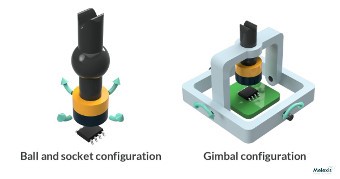
By placing the permanent magnets in a Halbach array and using flat coils, Hitachi and Hitachi Astemo have developed a powerful yet lightweight direct-drive system for electric vehicles that combines the motor, inverter and brake into a single unit which can be installed in the wheel. The new motor transmits the high drive force necessary to run an EV directly to the wheels, and its lightweight design with world-class 2.5 kW/kg power density significantly limit the weight increase traditionally associated with in-wheel motors, the companies said.
Increasing the number of magnetic poles is effective in improving a motor’s drive force but also can reduce the proportion of magnetic flux that can be effectively used, requiring more coil weld points and welding space, they explained. By placing the magnets in a Halbach array, however, the Hitachi and Hitachi Astemo engineers improved the drive force by increasing the effective magnetic flux of each magnetic pole and made the motor lighter by using beam welding to create a high-density array of flat coils. This limits the in-wheel weight increase of the EV, and avoids the increased energy consumption that is characteristic of conventional, heavier in-wheel systems.
Sometimes called a one-sided flux structure, a Halbach array has the magnets arranged to create a stronger field on one side while reducing the field on the other side to near zero. The magnets are oriented so that their poles are out of phase, typically by 90 degrees, essentially re-routing the magnetic field below the structure to the plane above it, strengthening the magnetic field of the working surface.
Adopting an in-wheel unit does not require a substantial change to the existing configuration of the suspension and other components, they note. Driveshafts and other indirect mechanisms have been eliminated, allowing motor power to be applied directly to EV operation, reducing energy loss by 30% and increasing the range on a single charge compared to existing EVs. The system also enables more expansive interior and battery space.
It uses direct-cooling technology. High-insulating cooling oil directly cools the power semiconductors and is cycled to the motor to directly cool the coils. This combined with the single-unit drive system-which integrates a motor, brake and inverter significantly reduces the space taken up by cooling pipes and enables in-wheel installation without having to significantly alter the existing configuration of suspension and other components.
The system was jointly developed by Hitachi and Hitachi Astemo, which is a joint venture with Honda set up as a technology company that develops and manufactures automotive and transportation components as well as industrial machinery and systems. Hitachi Astemo said it plans to apply the new direct-drive system to its already extensive, global EV product lineup. For more info, see www.hitachiastemo.com.



